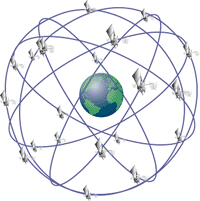 Humans are social creatures, but we’re also spread out all over the globe. When it comes to bridging gaps in geography and lifestyle to make connections with other people in different locations, technology has been the driving force. Seventy years ago, the radio connected us through airwaves. Soon television followed, after which we got the Internet.
Humans are social creatures, but we’re also spread out all over the globe. When it comes to bridging gaps in geography and lifestyle to make connections with other people in different locations, technology has been the driving force. Seventy years ago, the radio connected us through airwaves. Soon television followed, after which we got the Internet.
Now our world is hyper-connected: 3G/4G waves course invisibly through our bodies. PCs are ubiquitous and portable. Smart phones are multifunctional and able to provide Internet access as well as face-to-face communication. Satellites allow us to peer down upon our homes’ rooftops in Google Earth, navigate to a new address or even watch a visual picture of a shipper’s trucks crawling over the city by using hours of service.
Although the present is sounding more and more like the future, we’re not there yet. Here are a few glimpses into what we can expect to see in the next few decades that will grow our capacity to connect with each other.
A handful of beleaguered parents might claim that texting has been the defining technology of our generation. In the coming decades we can expect to see texting evolve as a mode of communication and perhaps even open the door to telepathic communication.
In keeping with their reputation as a future-focused country, Japan has claimed that it plans to develop mind-reading robots and consumer electronics controlled by thought alone before the end of this decade. Texts sent through thought, televisions operated through the batting of a lash, navigation systems that search for food when the driver thinks about being hungry; these are just a few potential applications for the technology.
Networks that use 4G have only just started to catch a little fire in large markets and we can expect it to continue to grow over the next eight years. In 2020, speculations suggest that wireless networks will be more pervasive. Multihoming and ubiquitous networks will allow users to simultaneously be connected to multiple wireless technologies and be able to switch between them, thereby connecting us even more deeply to our technology networks. You can read some of the research that points to this here.
Predictive text for cellphones was a revelation in communication. Google’s Instant feature predicts your search terms based on what you’ve searched in the past. Similarly, computers will begin to anticipate actions based on past use.
Some futurists believe robots will get us a bit closer “Blade Runner.” Robots — such as the Roomba or the iTouchless — will perform more housework and more complex tasks than merely endlessly vacuuming a room. Cars, now capable of parallel-parking themselves and warning drivers of obstacles and lane changes are expected to become more and more automated. Much as an airline pilot now gets his jet into the sky and then turns on the autopilot system, car drivers might be entering a closed highway while preparing to turn on their cars’ auto-drives.
The deep mysteries of the future are slowly revealing themselves through current technological advances. We can only guess at what the world will look like in 2032, but it’s sure to look back on 2012 and think, “How did they get by with such a primitive lifestyle?”



